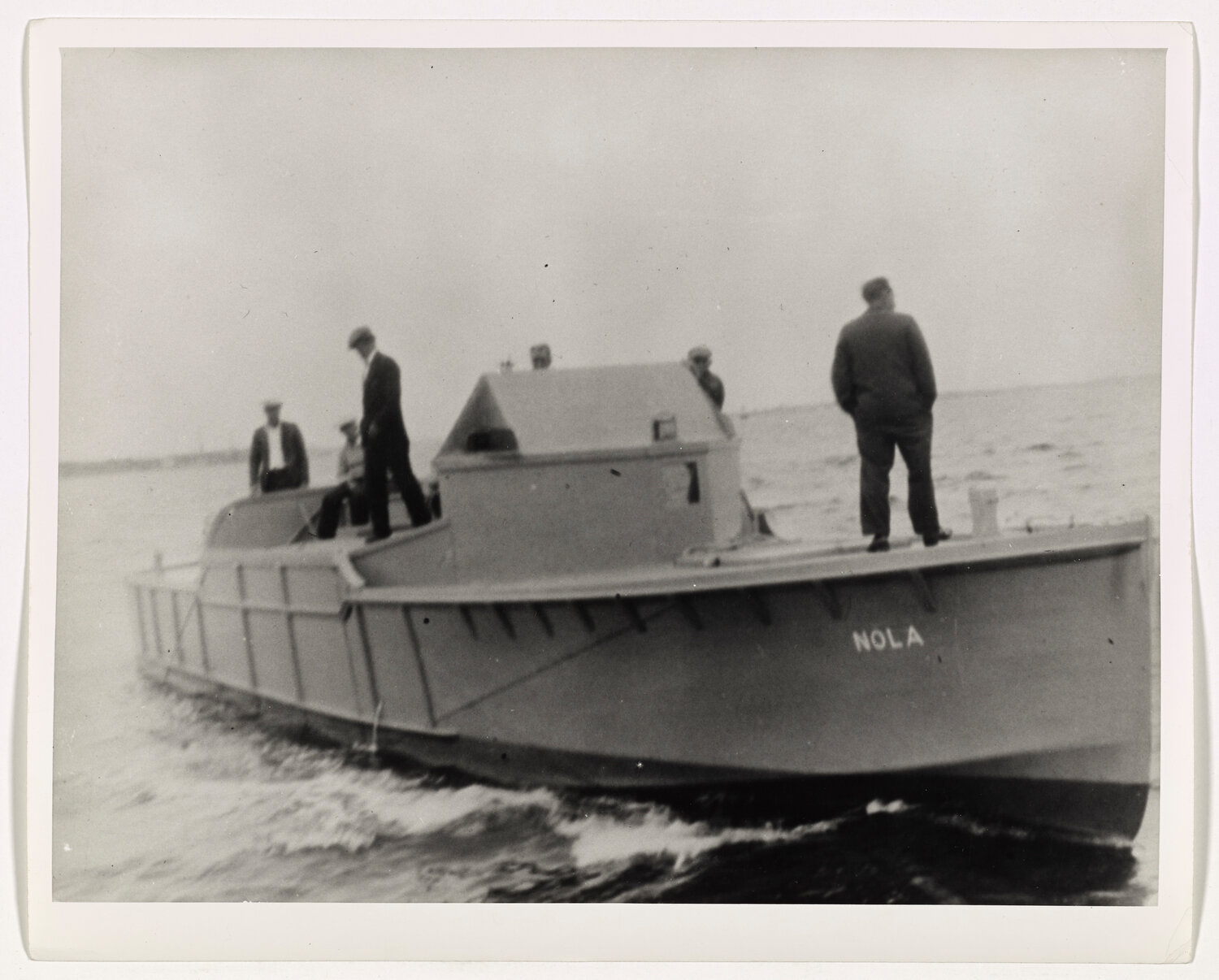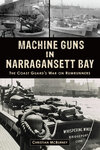- THURSDAY, JULY 18, 2024
A tale of boats, booze and machine guns on the bay
New book chronicles the Prohibition-era battles between the Coast Guard and rumrunners in Narragansett Bay
A hundred years ago, a battle raged in the waters of Narragansett Bay. The adversaries were the crew of U.S. Coast Guard ships and the captains of rum-running boats smuggling illegal liquor to piers …
This item is available in full to subscribers.
Please log in to continue |
Register to post eventsIf you'd like to post an event to our calendar, you can create a free account by clicking here. Note that free accounts do not have access to our subscriber-only content. |
Day pass subscribers
Are you a day pass subscriber who needs to log in? Click here to continue.
A tale of boats, booze and machine guns on the bay
New book chronicles the Prohibition-era battles between the Coast Guard and rumrunners in Narragansett Bay
A hundred years ago, a battle raged in the waters of Narragansett Bay. The adversaries were the crew of U.S. Coast Guard ships and the captains of rum-running boats smuggling illegal liquor to piers around Rhode Island.
It took place in the lull between two world wars, in the middle of Prohibition and in the early days of the Great Depression — all of which had enormous influence on this nautical conflict.
First came World War I, which unleashed the machine gun on the world, a device which remains one of the most effective killing contraptions ever invented. In those days, the newly formed U.S. Coast Guard mounted them on the decks of their cutters, along with one-pound cannons.
Next came Prohibition, when the federal government banned alcohol manufacture and sales for a period of 13 years. It was wildly unpopular, especially here in New England, and it gave rise to organized crime syndicates that made a killing bringing liquor into the country for the millions of people who kept drinking throughout the 1920s.
Last came the Great Depression, which rocked the financial and labor markets, leading to widespread unemployment and poverty. Many out-of-work or underemployed family men found themselves aboard rum-running boats, helping to haul illegal cargo across Rhode Island waters in the dark of night.
The most infamous skirmish of the era took place on Dec. 29, 1929, when the Black Duck — described in Coast Guard annals as “one of the faster and more notorious rumrunners” of the time — was fired upon while attempting to avoid a Coast Guard blockade between Newport and Jamestown. Three crewmen were killed by machine gun fire; the captain was wounded but survived.
News of the Black Duck incident spread around the country, and it touched off outrage from many. Coast Guard Boatswain Alexander Cornell and his crew were ultimately cleared of any wrongdoing, but the death of the three crew members left a mark on many. Within three years, after many protests and political maneuvers, and numerous more machine-gun skirmishes on Rhode Island waters, Prohibition was repealed and rum-running became a thing of the past.
Christian McBurney, an attorney practicing in Washington, D.C. who also lives in Rhode Island, was intrigued by the story of the Black Duck and the Coast Guard policies that allowed U.S. security forces to fire machine guns at U.S. citizens. An author or co-author of eight books on Rhode Island history, plus two books on the Revolutionary War, he dug more deeply into the history of machine guns on Coast Guard cutters.
His first search went through newspaper accounts of the era, and he found more than he had expected, which led to a much deeper dive through U.S. Coast Guard records at an archive in D.C. “In the end, I found 29 incidents in Narragansett Bay or other Rhode Island waters where the Coast Guard fired machine guns into rumrunners,” McBurney said. In addition to the Black Duck deaths, the researcher found two drownings associated with Coast Guard fire, and nearly a dozen documented incidents of serious to minor gunshot wounds.
It was enough to spur a new book, published last month, “Machine Guns in Narragansett Bay: The Coast Guard’s War on Rumrunners,” documenting the heavy artillery fired in local waters from 1929 to 1933.
Permission to fire
McBurney has clear feelings about policies that authorized the use of violent force against rum-running boats. “These were not hardened criminals,” he said. “They were fishermen … trying to making a living during the Great Depression.”
The machine guns were the Coast Guard’s attempt to counteract a nautical disadvantage. Their cutters were often too big and too slow to keep up with the rum-running boats that were built to be sleek, small and fast. Though many of their illegal runs took place in the dark of night, the system was also highly visible to anyone keeping watch.
The rum-running boats would often leave Narragansett Bay in broad daylight, setting sail for an area known as “Rum Row,” which was 12 nautical miles off the U.S. coast, in international waters. “This was no-man’s land, about 12 miles past Block Island,” McBurney said. Waiting there were supply ships loaded with foreign liquor, much of it sailed down here from manufacturing plants located on two islands off the coast of Nova Scotia or other foreign ports.
The rumrunners would tie up to the supply ships, load their cargo, and then time their trips back home for the middle of the night. They would “run dark,” McBurney said, with no lights or equipment to guide them, to avoid the Coast Guard waiting to snare them.
Even if ordered to stop, they would ignore the warnings, outmaneuver the cutters, sneak into a dark port or close to a dark shore and unload their cargo before the Coast Guard could catch up to them.
Aim for the gas tanks
During his research, McBurney found clear evidence that the Guardsmen were trained to aim for the rumrunners’ fuel tanks. “I came across one memo from a Coast Guard officer who had a drawing of the back of a rumrunner boat, and then a drawing of where the gas tank was,” McBurney said. “They were told to aim so they could disable the engine or make the gas tank explode.”
They were successful one night, when a rumrunning boat exploded in the Sakonnet River and one crew member drowned. In another incident, Cornell and crew chased the rumrunning boat Idle Hour up the Sakonnet River, with guns firing all the way. The rumrunners escaped long enough to dump their cargo in the water off Common Fence Point, but when they went back to retrieve it, local residents had already found it and hauled it away.
McBurney also found evidence that the machine gun bullets occasionally hit targets not intended. The owner of a home at Fogland Point in Tiverton came home to find high-powered bullets had struck the house and were embedded in the walls, a table and a chair.
McBurney said he found no incidents of a rum-running boat ever firing at the Coast Guard, but he also found evidence that the two adversaries shared more in common than might be expected. Some of the same shipyards that built the Coast Guard cutters were also building the rumrunners.
McBurney’s book is available at Linden Place in Bristol, Barrington Books and Amazon.
Other items that may interest you









